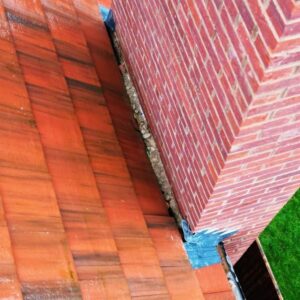
Latest News

Welcome to Home Snagging UK, where we understand that moving into a new build property is an exciting journey filled with anticipation. However, amidst the excitement, it’s crucial to address the aspect of snagging – a key step in ensuring your new home is exactly as you expect it to be, both aesthetically and structurally.
Snagging lists play a pivotal role in the final stages of acquiring a new build property. These lists detail both minor and major defects – from paintwork imperfections to structural issues – that need addressing to ensure your new home is in perfect condition. Identifying these defects before you finalise your property purchase can save you time, money, and future headaches, making snagging lists an indispensable tool for new homeowners.
At its core, snagging is the comprehensive process of identifying and listing faults that require rectification in a new build or renovation project. It’s a thorough inspection aimed at ensuring every corner of your new home meets the high standards of quality and safety you deserve. This process is not just about peace of mind; it’s a critical step towards safeguarding your investment and ensuring your home is ready for comfortable living from day one.
When we talk about defects in the context of snagging, it’s essential to distinguish between two main types: critical and cosmetic defects.
In summary, understanding and differentiating between critical and cosmetic defects on your snagging list is fundamental. This knowledge ensures that you prioritise issues that could affect your home’s safety and integrity while also keeping an eye on those details that make your house a home. With Home Snagging UK, you’re equipped to navigate this crucial process, ensuring your new build property is precisely as you envisioned, both safe and beautiful.

Continuing our exploration of snagging lists for new build properties, we delve deeper into the common issues identified within the interior of the home. These interior checks are crucial for ensuring the functionality and finish of your living spaces meet the expected standards.
Completing a thorough snagging process, including these detailed checks, is crucial in ensuring your new home is not only aesthetically pleasing but safe and fully functional. While some issues might seem minor, they can lead to bigger problems if not addressed promptly. Engaging a professional snagging service can help identify and document these issues effectively, ensuring that your transition to your new home is as smooth and hassle-free as possible.

Understanding the difference between critical and cosmetic defects in your new home is crucial for prioritising fixes and ensuring your home’s safety and aesthetic appeal.
Navigating snagging issues effectively is key to transitioning smoothly into your new home.
Hiring professional snagging services offers several benefits:
Ensuring your new home is in the best possible condition before you move in is critical. By understanding the difference between critical and cosmetic defects and effectively addressing snagging issues with builders or through professional services, you can ensure your home is safe, functional, and beautiful.
Conclusion
Navigating the complexities of snagging in new build homes can be a daunting task. However, understanding the criticality of defects, the importance of a thorough snagging list, and the roles both homeowners and professionals play in this process is crucial. Whether it’s identifying critical issues that affect the livability and safety of your home or addressing cosmetic defects that impact its aesthetic, a meticulous approach to snagging ensures that your new home meets your expectations in every aspect.
At Home Snagging UK, we understand the intricacies involved in making a house a home. Our expertise lies in providing comprehensive snagging surveys that meticulously identify both critical and cosmetic defects. With a team of experienced professionals, we advocate on your behalf, ensuring that your concerns are addressed efficiently and effectively, making the transition into your new home as seamless as possible.
Don’t navigate this crucial process alone. Contact us now at Home Snagging UK for peace of mind and expert assistance:
Let us help you secure the comfort and safety of your new build home with our professional snagging services.
Barnsley
Beverley
Birmingham
Chester
Chesterfield
Coventry
Derby
Dewsbury
Doncaster
Grantham
Grimsby
Huddersfield
Hull
Huntingdon
Leeds
Leicester
Lincoln
Manchester
Mansfield
Newcastle
Nottingham
Peterborough
Rotherham
Scunthorpe
Sheffield
Shrewsbury
Stoke
Telford
Wakefield
Warwick
Wolverhampton
Worksop
York
We’re home snagging specialists with over 20 years of experience snagging new build homes. We identify construction defects, big or small, that your developer may have missed. We are fully qualified surveyors who work with our customers to make sure they get the perfect home.
© Home Snagging UK 2025
Website Maintained By Be My Social